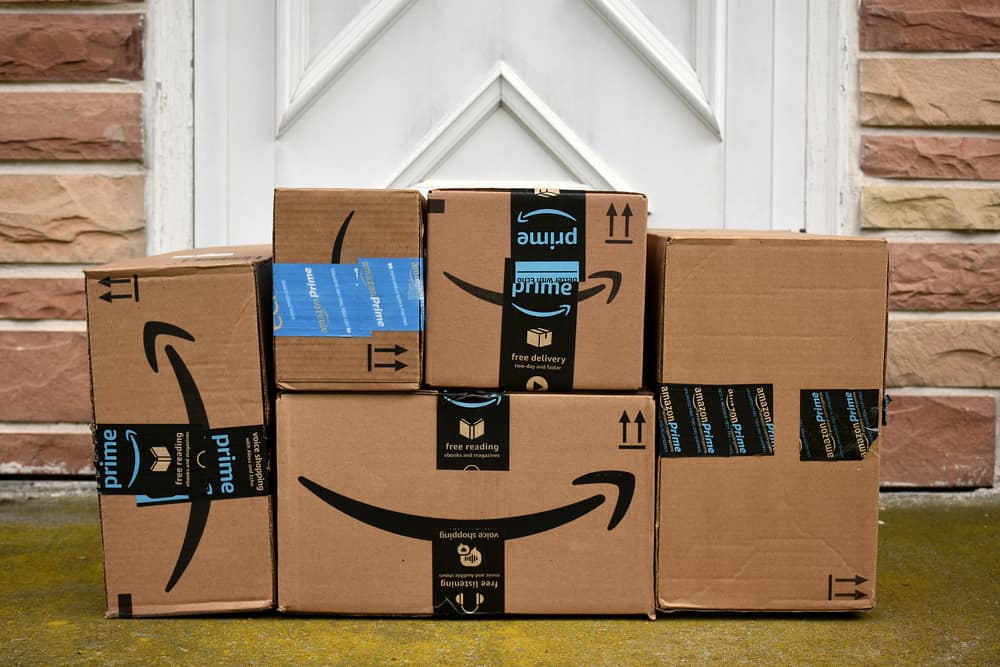
Jeff Bezos managed to convince 100M people to sign up for Amazon Prime, but President Trump is not a fan. Trump has tweeted about the discounted postal rates Amazon enjoys, the USPS’s finances, the taxes the e-commerce giant supposedly avoids, Amazon’s responsibility for the ‘retail apocalypse’, and, of course, the Washington Post, which Trump considers an Amazon lobbyist.
It’s a little tough to connect the dots, but we’ll try: Trump alleges that Amazon has negotiated a very favorable deal with the United States Postal Service that is simultaneously bankrupting the USPS, allowing Amazon to drive brick and mortar retailers out of business, and making Jeff Bezos the wealthiest man in the world.
The truth is a bit more complicated, and involves the steady decline of the letter volume that the USPS historically monopolized, its subsequent reliance on ‘competitive products,’ and Amazon’s exponential parcel volume growth during the same time period. Deutsche Bank published a research report titled “Breaking through the Noise on AMZN, USPS & FDX/UPS” and dated April 24th that details the relationship between the United States Postal Service and its biggest customer.
The questions Deutsche Bank’s analysts were trying to answer are essentially two: is it true that the USPS loses $1.50 on every Amazon package it delivers, and what would be the effects of a USPS price hike? The answer to the first question is ‘no,’ and the answer to the second is ‘Amazon would probably be fine, and FedEx and UPS would benefit.’
The first part of the story is the steady 6% year-over-year decline of the USPS’s ‘market dominant’ products like letters and stamps—products offered by the Post Office that are immune to competition from parcel carriers like FedEx. People send and receive fewer letters every year, which has forced the USPS to derive a greater percentage of its revenue from ‘competitive products’ like package delivery. In 2013, the USPS entered into a 5 year deal with Amazon in order to lock in a vast volume of ground packages at a known rate; that contract, whose specifics have not been released to the public, is up for review this year (which might be why Trump has been tweeting about it).
Deutsche Bank’s analysts think that the deal has certainly been good for Amazon. “Over the past five years, we think the USPS has become an integral part of the Amazon Prime experience via: 1) expanded delivery on Sundays, which FedEx and UPS don’t do, 2) provides a viable alternative to FedEx and UPS, and 3) contained Amazon’s outbound shipping costs,” the analysts wrote.
The deal has been good for the US Postal Service as well: Deutsche Bank estimates that 53.1% of USPS ground parcels volume comes from Amazon. The proportion of USPS’s volume represented by ground parcels has more than tripled, growing from .6% in FY2012 to 1.9%, and the operating profit from that service has increased 660% (190% growth in volume and 160% increase in profit per piece). USPS’s average revenue per piece has climbed from about $1.40 in FY2012 to just under $2.20 in FY2017; over the same period, the average profit per piece grew from about 35 cts to 95 cts. Clearly, whatever the USPS’ financial issues are—and they’re largely related to things like retirement expenses and worker’s comp—they aren’t due to the Amazon deal.
Why has the so-called ‘sweetheart deal’ with Amazon been so beneficial to the US Postal Service? It has to do with how Amazon uses the Post Office: most importantly, Amazon does not simply mail packages from a fulfillment center to a customer’s home. Instead, Amazon uses a technique called “Postal Injection”, which means that Amazon chooses the most cost-efficient point in the USPS network to insert its package. In practice, this means that packages in a sortation center are grouped according to the zip code of their destination, palletized, linehauled (often in an Amazon trailer) to a local post office, where the pallet is broken apart for last mile delivery. In other words, Amazon is doing more than 50% of the work.
“In our view,” wrote Deutsche Bank, “Postal Injection works effectively when the company is able to do the following: 1) predict demand, which for Amazon, comes from its deep understanding of shopping patterns of millions of customers and the items they save in their shopping carts, 2) store items as close to the customer as possible, 3) increase the number of items per package/order (i.e. bundling), 4) bring significant parts of the delivery process in-house, from fulfillment centers to sortation centers, and long-haul trucking, and 5) get the items as close to the customer’s home without having to use expensive 3P delivery alternatives.”
Amazon is able to flexibly inject packages into the Post Office because it has bought and built a rapidly growing network of sortation centers in addition to its fulfillment centers. Check out the graph below to get a sense of Amazon’s astonishingly large real estate holding, which grew from about 65M sq ft in 2015 to nearly 130M sq ft by 2017:

Deutsche Bank’s analysts closed their report by considering what effect upward adjustments in USPS pricing would have on FedEx and UPS. Simply put, FedEx and UPS would be able to raise their prices without raising their costs, dropping hundreds of millions of dollars—representing an estimated 24% of FedEx’s annual operating profits—straight to the bottom line.
Stay up-to-date with the latest commentary and insights on FreightTech and the impact to the markets by subscribing.










